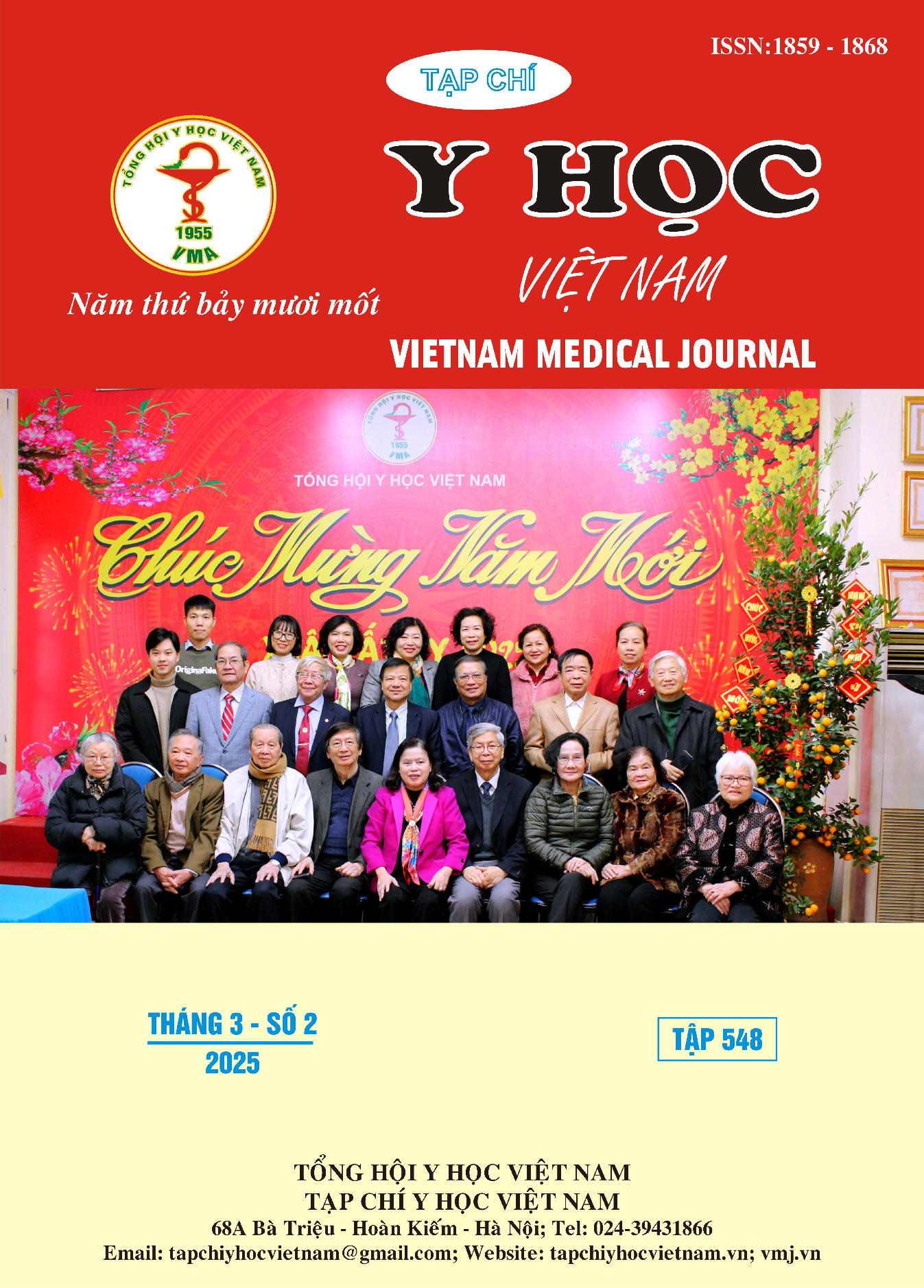RESULTS AFTER SURGICAL TREATMENT OF URETERAL STRICTURES AT THE DEPARTMENT OF UROLOGY, THAI NGUYEN NATRIONAL HOSPITAL
Main Article Content
Abstract
Objectives: The study to evaluate the initial results after 1 month in patients undergoing surgery to treat ureteral stenosis at the Department of Urology, Thai Nguyen National Hospital. Material and Methods: A descriptived study method, longitudal follow-up without control, and a combination of prospective and retrospective, data was collected 99 cases of surgical treatment of ureteral stenosis from June 2021 to June 2022, the main outcomes included the ability to improve clinical symptoms as well as on imaging and record the rate of complications - complications after surgery. Results: The research results show that the male/female ratio was 1.2/1, common clinical features were low back pain (78.8%), renal colic were 10.1%, and one-sided enlarged kidney signs was 2.0% patients. Preoperatively 96 patients (77%) had ipsilateral hydronephrosis grade I was 70,7%, grade II was 21,2%, and grade III was 5,1%. Abdomen and pelvis multislice computed tomography (MSCT) was show that 43.6% of the major obstruction sites were in the upper third of the ureter. The longest time for open surgery (153 minutes), followed by Hip-Back endoscopy (111 minutes), and the shortest retrograde endoscopic surgery (83.23 minutes). There were no intraoperative complications in the early postoperative period and after. The degree of fluid retention on ultrasound at re-examination has changed compared to before surgery. The average length of hospitalization operating surgery was 11,60±5,55 days and endoscopic surgery was 8,84±4,44 days. Results after 1 month: 97% was good; 3,0% was normal. Conclusions: Laparoscopic surgery in the treatment of ureteral stenosis has a high success rate and most patients have no complications after treatment.
Article Details
Keywords
ureteral stenosis, ureteral endoscopic surgery, ureteral stricture treatment surgery, endoscopic ureteral stricture surgery, treatment for ureteral stenosis.
References
2. Elbers, J. R., Rodríguez Socarrás, M., Rivas, J. G., Autran, A. M., Esperto, F., Tortolero, L., Carrion, D. M., & Sancha, F. G. (2021). Robotic Repair of Ureteral Strictures: Techniques and Review. Current urology reports, 22(8), 39. https://doi.org/10.1007/s11934-021-01056-8.
3. Gonzalez, A. N., Mishra, K., & Zhao, L. C. (2022). Buccal Mucosal Ureteroplasty for the Management of Ureteral Strictures: Patient Selection and Considerations. Research and reports in urology, 14, 135–140. https://doi.org/ 10.2147/RRU.S291950.
4. El-Harrech, Y., Ghoundale, O., Kasmaoui, E. H., & Touiti, D. (2016). Transperitoneal Laparoscopic Pyelopyelostomy for Retrocaval Ureter without Excision of the Retrocaval Segment: Experience on Three Cases. Advances in urology, 2016, 5709134. https://doi.org/ 10.1155/2016/5709134.
5. Mao, L., Xu, K., Ding, M., Pan, J., & Guo, Z. (2017). Comparison of the efficacy and safety of retroperitoneal laparoscopic and open surgery for the correction of retrocaval ureter. Therapeutics and clinical risk management, 13, 697–701. https://doi.org/10.2147/TCRM.S139113. https://doi.org/10.2147/TCRM.S139113.
6. Liu, E., Sun, X., Guo, H., Li, F., Liu, S., Wang, K., & Hou, Y. (2016). Retroperitoneoscopic ureteroplasty for retrocaval ureter: report of nine cases and literature review. Scandinavian journal of urology, 50(4), 319–322. https://doi.org/ 10.1080/21681805.2016.1177589.
7. Bộ Y tế. Hướng dẫn chẩn đoán và điều trị các bệnh Thận – Tiết niệu ban hành kèm theo Quyết định số 3931/QĐ-BYT ngày 21/9/2015 của Bộ trưởng Bộ Y tế, 2015.
8. Ngô Xuân Thái, Võ Xuân Huy. (2021). Kết quả sớm điều trị hẹp niệu quản bằng phương pháp nội soi nong bóng. Tạp chí Y Học TP. Hồ Chí Minh, 25 (1), Chuyên Đề Ngoại Khoa, tr. 233 -240.
9. Hạ Hồng Cường, Hoàng Long, Chu Văn Lâm, Nguyễn Đức Trường. (2015). Đánh giá kết quả điều trị hẹp niệu quản bằng Laser Holmium tại Bệnh viện Việt Đức. Tạp chí Y học Thành phố Hồ Chí Minh, 19(4), tr. 93 -100.


